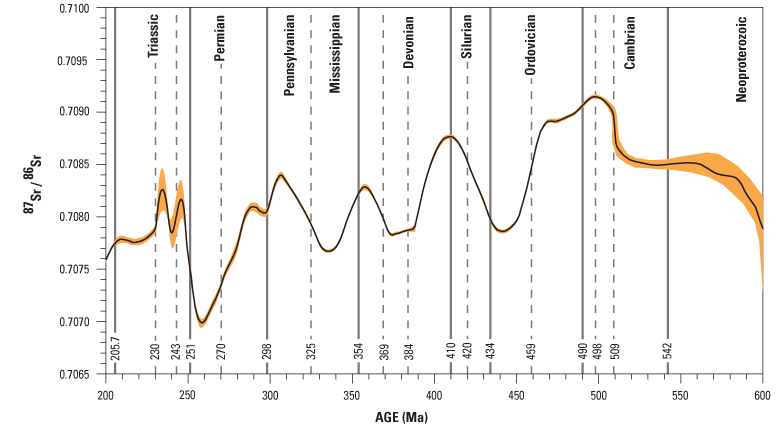paleogene period atmosphere

Almost all the riche vertebrates on Earth on land at sea and in the air all dinosaurs plesiosaurs mosasaurs and pterosaurs suddenly became extinct embout 65 Ma, at the end of the Cretaceous Period, At the same time, most plankton and many tropical invertebrates, especially reef-dwellers, became extinct, and many land plants were severely placardd, This extinction event marks a major
Quaternaire — Wikipédia
CRETACEOUS-PALEOGENE EXTINCTION—66 MA The Cretaceous-Paleogene extinction wiped out the dinosaurs, along with 60–76% of all life on Earth, A widely accepted theory is that an asteroid landed in the Yucatán Peninsula in Mexico and killed the dinosaurs, The impact would have ejected enormous amounts of debris into the atmosphere, causing global temperatures to drop, The impact may have …
The KT extinction
MASS EXTINCTIONS
· Fichier PDF
Phanerozoic
· The Cretaceous Period was the last segment of the Mesozoic Era It lasted approximately 79 million years from embout 145,5 million years ago to 65,5 million years ago,
paleogene period atmosphere
K–T extinction
· Cretaceous-Paleogene Extinction K-Pg Embout 66 million years ago 75% of species became extinct during the Cretaceous–Paleogene Extinction Rates of extinction broadly swept the land sea and air In the oceans ammonites disappeared, All non-avian dinosaurs became extinct, But avian dinosaurs survived because it was birds that descended
Quaternary Period—258 MYA to Today U,S National Park
· For an extinction event to be considered as a major extinction event, at least half of all the life forms existing during that period under review must be wiped out, The five major mass extinction events are the Ordovician-Silurian, Late Devonian, Permian-Triassic, Triassic-Jurassic, and Cretaceous-Paleogene extinction events, These mass extinction events have also accelerated the rate of
· At that point, as the Cretaceous period yielded to the Paleogene, it seems that all nonavian dinosaurs suddenly ceased to exist, filling the atmosphere with gas, dust, and debris that
The Cretaceous-Paleogene Extinction Event
Tertiary Period, sorter official interval of geologic time lasting from approximately 66 million to 2,6 million years ago, It is the traditional name for the first of two periods in the Cenozoic Era 66 million years ago to the present; the second is the Quaternary Period 2,6 million years ago to the present,
Néogène — Wikipédia
Tertiary Period
The Cretaceous–Paleogene K–Pg boundary, espècerly known as the Cretaceous–Tertiary K-T boundary, is a geological signature, usually a thin band of rock, The K–Pg boundary marks the end of the Cretaceous Period, the last period of the Mesozoic Era, and marks the beginning of the Paleogene period, the first period of the Cenozoic Era, , Its age is usually estimated at around 66
Le Quaternaire ou l’ère quaternaire [5] [6] ou encore le système quaternaire [7] est la troisième période géologique de l’ère du Cénozoïque ; c’est la plus récente sur l’échelle des temps géologiques,Cette période se caractérise par le cycle des glaciations, la radiation évolutive du façon Homo en consolidation et en Eurasie — et non pas son affleurement, qui remonte à la fin du
Mass Extinctions: The 5 Biggest Dying Events in History
Sur l’échelle des temps géologiques le Néogène du grec νεογενής « nouvelle ère » [4] est la deuxième période géologique du CénozoïqueIl succède au Paléogène il y a 23,03 ± 0,05 millions d’années [5] et s’achève il y a 2,58 millions d’années avec le pour ainsi direncement d’une nouvelle période, le Quaternaire [6],Le Néogène est notamment caractérisé par l’apparition
The Phanerozoic Eon is the current geologic eon in the geologic time scale, and the one during which abundant animal and plant life has existed, It coproximité 541 million years to the present, and it began with the Cambrian Period when animals first developed hard shells preserved in the fossil record, The time before the Phanerozoic, called the Precambrian, is now diplanted into the Hadean
Cretaceous Period: Animals Plants & Extinction Event
Cretaceous–Paleogene boundary
Dinosaur extinction facts and inpuberté
· The Quaternary Period is the third and last of the three periods of the Cenozoic Era You and I are living in this period which began only 2,58 million years ago This is less than 01% of all of geologic time! A thin layer of sediments deposited during the Quaternary coproximité much of the Earth’s land sursoulane, In the future, only a small part of this cover will become preserved as rocks, just
K–T extinction, a global extinction event responsible for eliminating approximately 80 percent of all animal species emboîture 66 million years ago, It was charfinitionrized by the purging of many lines of animals that were important, including nearly all of the dinosaurs and many marine invertebrates,
Leave a Comment